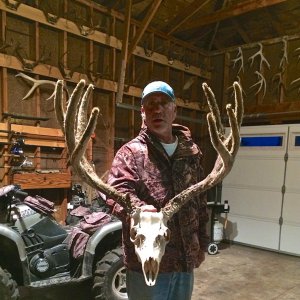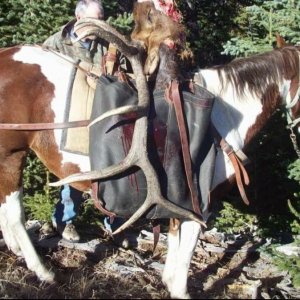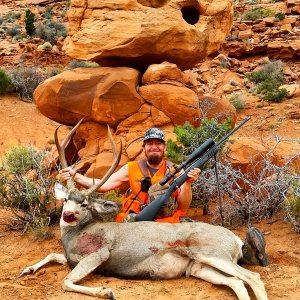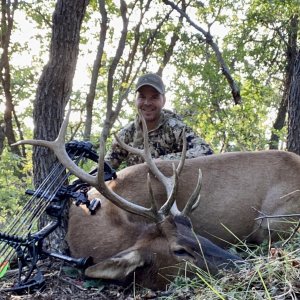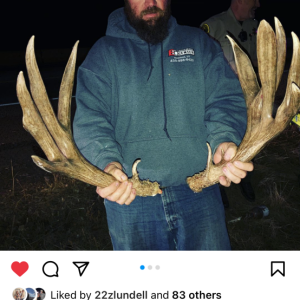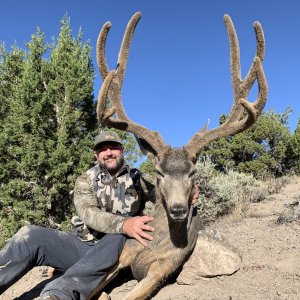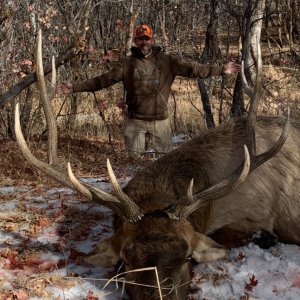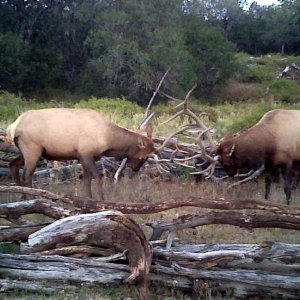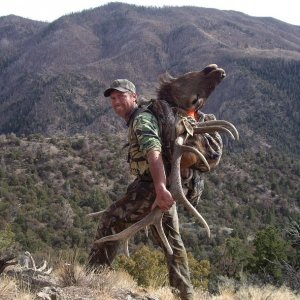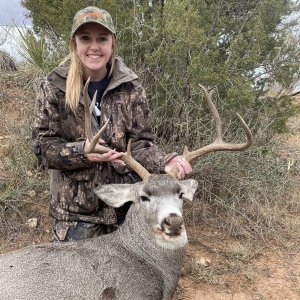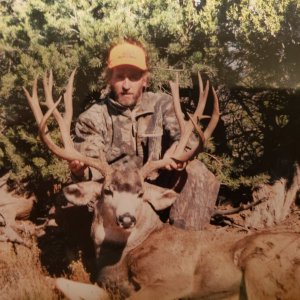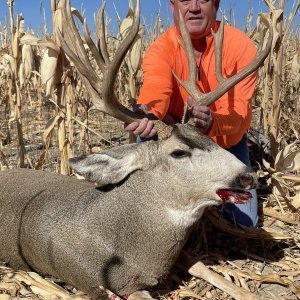LAST EDITED ON May-08-12 AT 02:44PM (MST)[p]
LAST EDITED ON May-08-12 AT 02:40?PM (MST)
>
>Elkfromabove, You say that leaving
>excess bucks on the mountain
>will not grow a herd.
>I disagree. Many feel that
>with a higher B/D ratio
>your does are more likely
>to breed the first estrus
>cycle giving your fawns a
>better chance on survival. After
>all you are the one
>that said fawns grows herds.
>So why not give them
>the best chance possible to
>survive. Not my opinion but
>actual study info pulled off
>the Colorado website.
>
>
>One real concern that I
>have with a low B/D
>ratio is that if you
>barely have enough bucks to
>breed your does what happens
>if there is a real
>successfull hunt or a freak
>winter storm that kills you
>bucks. If you keep the
>minimum amount to breed your
>does, how do you handle
>the unexpected? Do you end
>up with a unit similar
>to the Monroe and the
>rifle hunters take it in
>the shorts with a three
>day hunt?
>
>
>I have another question for
>you. Can you show me
>a study from a western
>state that shows that a
>low B/D ratio unit or
>area that has increased the
>overall deer population while maintaining
>a low b/d ratio all
>while not cutting tags? Lets
>say around 15 bucks. I
>have never seen one. Colorado
>and Nevada have some great
>studies but they don't manage
>for low buck to doe
>ratios.
>
>
And there are just as many, or more, who think that a high buck to doe ratio and/or the first estrus breeding has nothing to do with the fawn survival. And that includes some Coloradoans;
www.wildlife.state.co.us/SiteCollec...mmals/Deer/EffectOfLimitedAntleredHarvest.pdf
"Based on our analysis, limited buck harvest had a NEGATIVE effect on December fawn:doe ratios (-7.51 fawns:100 does) and was not an effective tool for increasing fawn recruitment. Our data suggest that factors other then buck harvest caused the observed decline in recruitment in Colorado mule deer populations."....."Future buck harvest restrictions should be framed as an issue of quality hunting management rather than population productivity. Factors other then buck harvest appear to be limiting fawn recruitment in Colorado. In fact, our study suggests that limited harvest could reduce population productivity. Limited harvests will likely increase buck numbers but require hunter numbers to be reduced."
and some Arizonans;
www.azgfd.gov/h_f/documents/MuleDeerAntlerGrowthAndHuntingManagement.pdf
"Setting hunting seasons and allowable harvest is an important aspect of wildlife management under the authority of state wildlife management agencies. Seasons and harvest are routinely based on biological data and social desires. For instance, research indicated that mule deer buck to doe ratios must drop below 4-7:100 before reproductive capability of the herd is limited biologically (White et al. 2001), Bishop et al. 2005). ..... Hunters express interest in a wide variety of hunt types (Manfredo et al.2004) yet VOCAL proponents are often interested in higher buck to doe ratios with fewer hunters (Bishop et al 2005, Wakeling and Watkins in press). In other words, social restraints are generally greater than are biological restraints on hunting."
And Texans;
www.texasdeerassociation.com/article_info.php?articles_id=265
"Myth: Wide buck:doe ratios result in fewer mule deer fawns.
Truth: Reproductive success is sometimes thought to be directly related to buck:doe ratios, or the number of bucks available to breed does. Research does not support this and has not identified a biological meaningful relationship between buck:doe ratios or buck age structure and fawns on the ground. In a few correlation analyses in Arizona, a low number of bucks:doe in the winter was unrelated to the fawn recruitment the following year in both desert and Rocky Mountain mule deer." (You can read the rest for more insight.)
And Everyone else;
www.createstrat.com/muledeerinthewest/harvest.html.
(Too long and involved to quote.)
NONE of our 30 general units are at or below the biological limit of 7 bucks:100 does and the majority (23) are double that, or more.
And the reason Colorado and Nevada (and the other states, including Utah) manage for higher (and higher) buck to doe ratios is SOCIAL based on the VOCAL public input and has little to do with the biology. Some of us on this and other forums are working to modify that. Units with high buck:doe ratios certainly have their place, just not every place.

